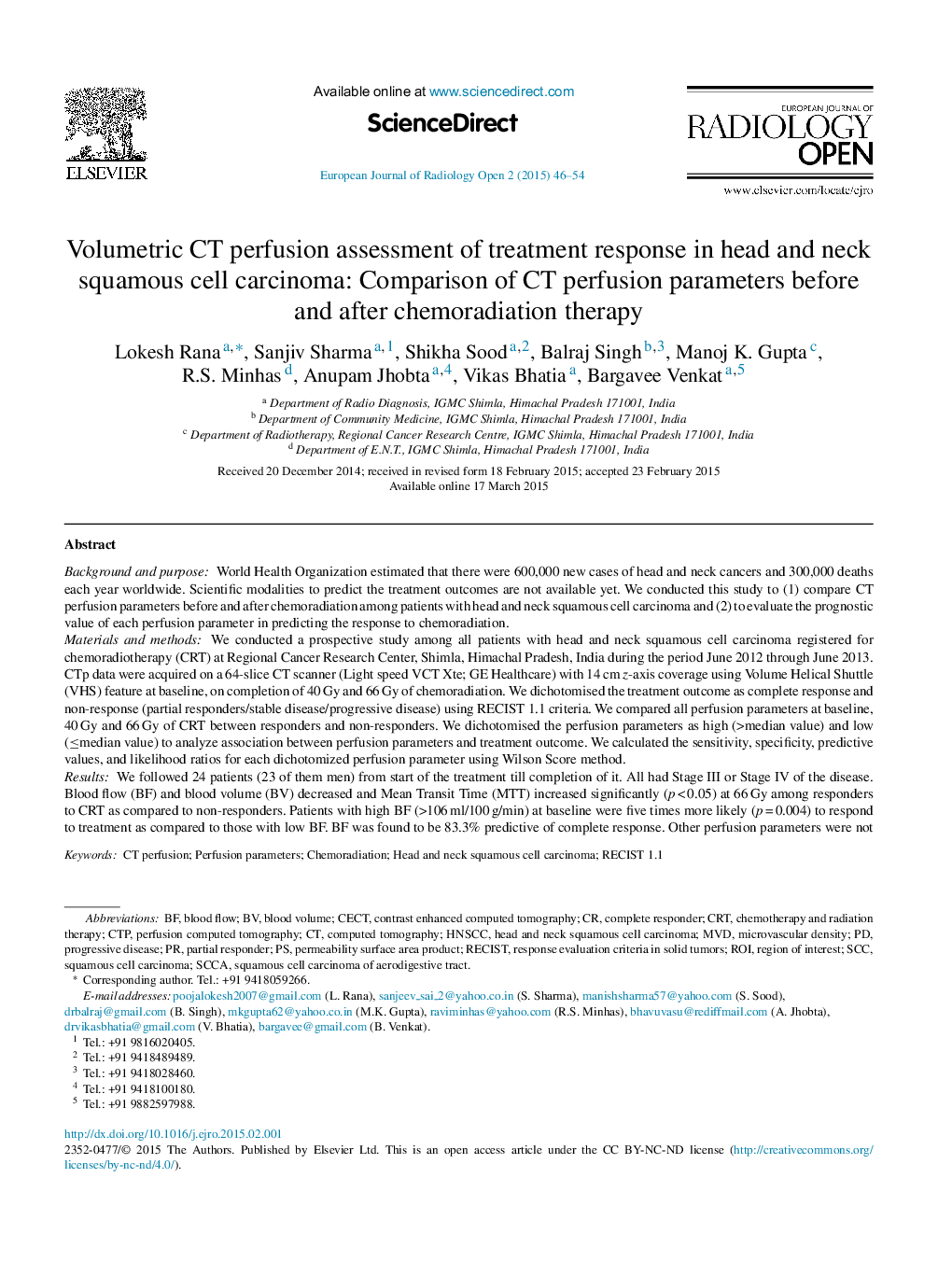| Article ID | Journal | Published Year | Pages | File Type |
|---|---|---|---|---|
| 4229704 | European Journal of Radiology Open | 2015 | 9 Pages |
Background and purposeWorld Health Organization estimated that there were 600,000 new cases of head and neck cancers and 300,000 deaths each year worldwide. Scientific modalities to predict the treatment outcomes are not available yet. We conducted this study to (1) compare CT perfusion parameters before and after chemoradiation among patients with head and neck squamous cell carcinoma and (2) to evaluate the prognostic value of each perfusion parameter in predicting the response to chemoradiation.Materials and methodsWe conducted a prospective study among all patients with head and neck squamous cell carcinoma registered for chemoradiotherapy (CRT) at Regional Cancer Research Center, Shimla, Himachal Pradesh, India during the period June 2012 through June 2013. CTp data were acquired on a 64-slice CT scanner (Light speed VCT Xte; GE Healthcare) with 14 cm z-axis coverage using Volume Helical Shuttle (VHS) feature at baseline, on completion of 40 Gy and 66 Gy of chemoradiation. We dichotomised the treatment outcome as complete response and non-response (partial responders/stable disease/progressive disease) using RECIST 1.1 criteria. We compared all perfusion parameters at baseline, 40 Gy and 66 Gy of CRT between responders and non-responders. We dichotomised the perfusion parameters as high (>median value) and low (≤median value) to analyze association between perfusion parameters and treatment outcome. We calculated the sensitivity, specificity, predictive values, and likelihood ratios for each dichotomized perfusion parameter using Wilson Score method.ResultsWe followed 24 patients (23 of them men) from start of the treatment till completion of it. All had Stage III or Stage IV of the disease. Blood flow (BF) and blood volume (BV) decreased and Mean Transit Time (MTT) increased significantly (p < 0.05) at 66 Gy among responders to CRT as compared to non-responders. Patients with high BF (>106 ml/100 g/min) at baseline were five times more likely (p = 0.004) to respond to treatment as compared to those with low BF. BF was found to be 83.3% predictive of complete response. Other perfusion parameters were not significantly predictive of outcome (p > 0.05) Combination of high BF (>106 ml/100 g/min) and low (≤47 ml/100 g/min) permeability surface (PS) was 100% predictive of response to CRT irrespective of the stage of tumor.ConclusionsHigh BF at baseline is the single best predictor of response to chemoradiaton. A combination of high BF and low PS was found to be 100% predictive of complete response irrespective of the stage of the tumor.
